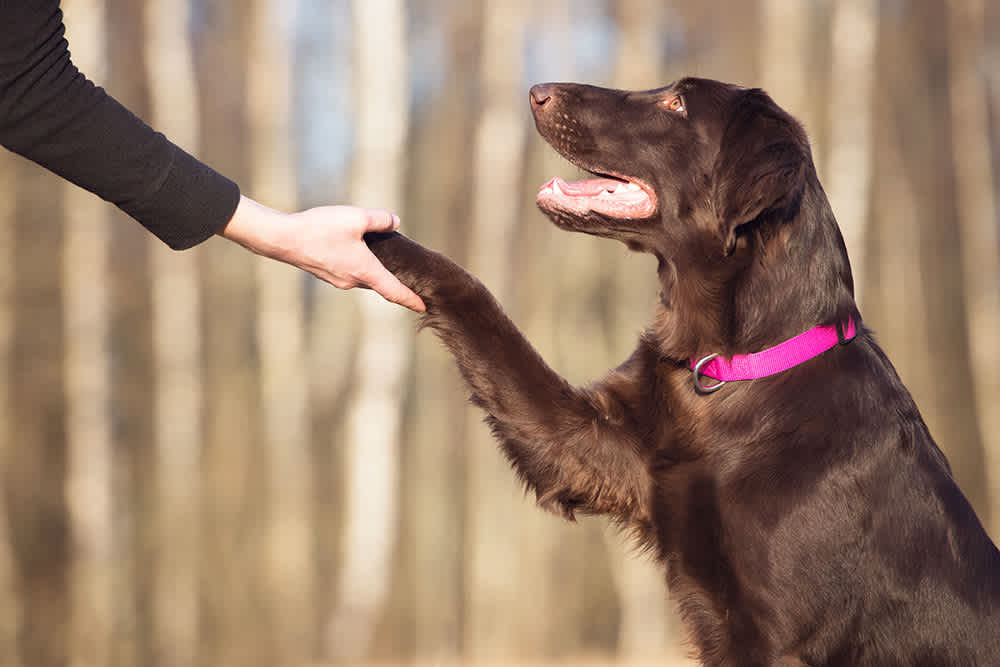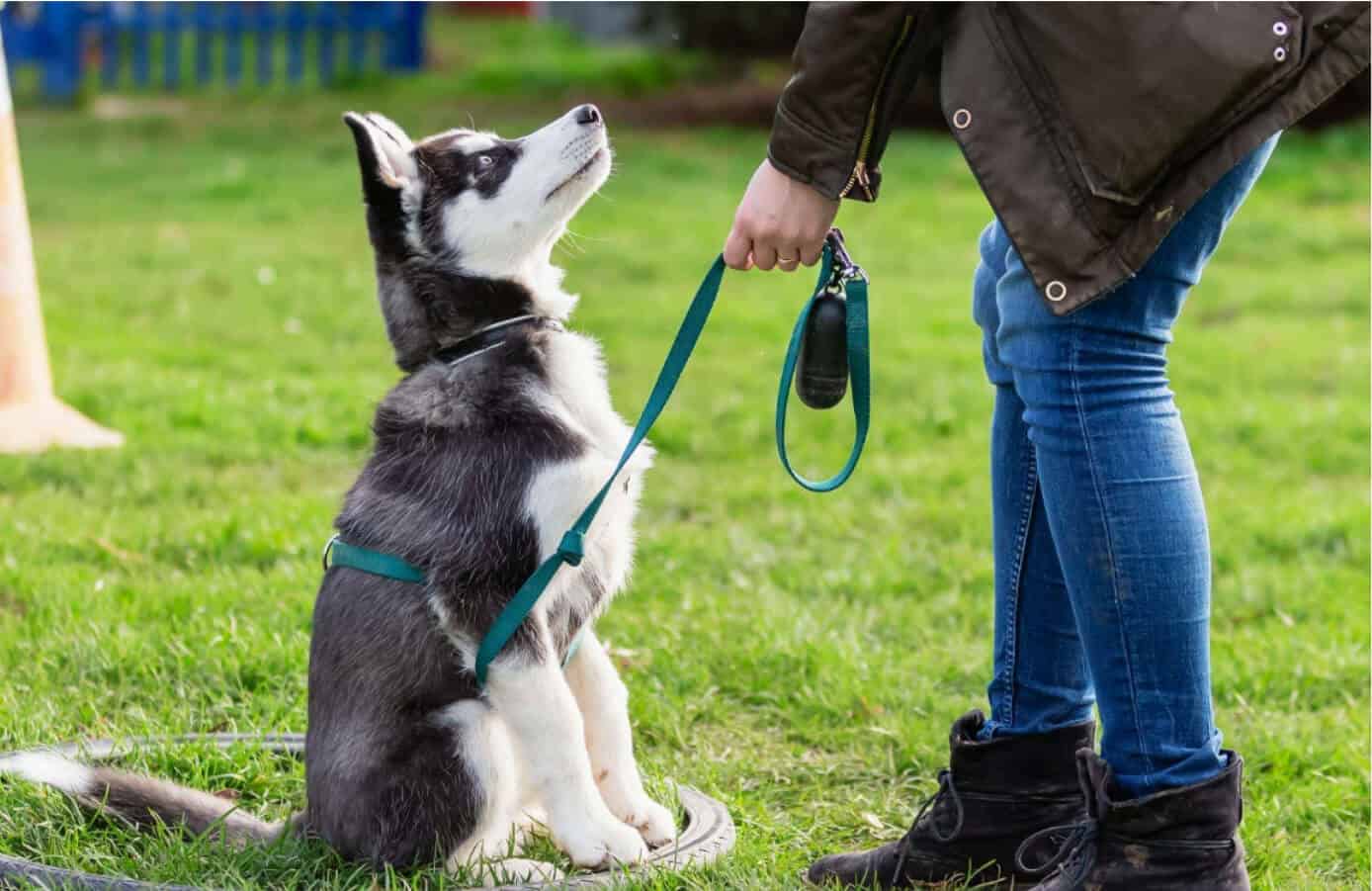How Professional Dog Training Can Enhance Your Dog’s Skills and Behavior
How Professional Dog Training Can Enhance Your Dog’s Skills and Behavior
Blog Article
Novice's Guide to Effective Pet Training in your home
Efficiently training a canine at home requires a nuanced understanding of canine actions and effective interaction strategies. Establishing clear training objectives, using top quality incentives, and keeping uniformity throughout household members are critical components. Integrating training into day-to-day routines can improve both interaction and retention.
Recognizing Pet Dog Behavior
Understanding canine habits is crucial for effective training and fostering a harmonious connection between people and their canine buddies. Dogs interact largely via body language, vocalizations, and faces, making it vital for owners to analyze these signals accurately. Recognizing habits such as tail wagging, grumbling, or shrinking can give insights right into a pet's mood and purposes.

Typical behavior concerns, such as hostility, anxiety, or extreme barking, commonly come from misunderstandings or unmet requirements. Observing and addressing these problems promptly can protect against escalation and guarantee a favorable training experience. By cultivating a deep understanding of canine actions, proprietors can customize their training approaches to fit their canine companions, eventually leading to a well-behaved and happy pet dog.
Vital Training Tools
A fully equipped training area can substantially boost the performance of dog training in your home. Vital training devices ensure that both the instructor and the canine can take part in effective sessions that foster knowing and bonding.

Purchasing a strong leash and a comfy, well-fitting collar or harness is essential for security and control. These tools aid establish borders and make sure the canine remains safe throughout training. Furthermore, a designated training location, devoid of disturbances, aids concentration for both the dog and the instructor.
Educating help such as training pads, cones, or dexterity devices can additionally boost the experience by presenting variety and challenges. Finally, having a note pad or digital application for tracking progress can be important, permitting you to note successes and locations for enhancement. Utilizing these crucial tools will produce a favorable training atmosphere and lay the structure for effective discovering.
Creating an Educating Regimen
Establishing a constant training regimen is crucial for effective pet dog training in the house. A well-structured routine not just assists in reinforcing preferred actions yet likewise gives your pet with a complacency and predictability. To create an effective training routine, begin by determining details training goals, such as fundamental commands, chain walking, or housebreaking.
Select an assigned time daily for training sessions, preferably when your pet is receptive and sharp. Procedure needs to be brief, roughly 5 to 15 minutes, to preserve emphasis and stop exhaustion. Uniformity in timing and atmosphere will enhance your canine's weblink understanding experience.
Integrate training right into everyday activities to strengthen skills. Technique commands throughout strolls or nourishment, which incorporates finding out right into all-natural routines. Furthermore, continue to be flexible and readjust the regular as needed, suiting your dog's power degrees and mood.
Positive Reinforcement Techniques
Positive support methods are essential to effective canine training, advertising preferred actions via rewards instead of penalty. This method makes use of positive stimulations, such as deals with, praise, or play, to urge pet dogs to repeat details actions. The keystone of this technique is timing; rewards should be offered promptly complying with the desired habits to develop a clear association.
When executing favorable reinforcement, it is necessary to choose incentives that are inspiring for your canine. High-value treats, such as little items of poultry or cheese, can be particularly reliable during training sessions. In addition, varying the incentives can keep your canine's interest and interest.
Beginning with easy commands, like "rest" or "stay," and progressively progress to much more complex jobs. Consistency is crucial; ensure that all member of the family use the exact same commands and reward systems to prevent complication.
Furthermore, it is essential to stay client and avoid irritation. Dogs, like people, find out at their very own rate. By fostering an encouraging training environment via favorable support, you can enhance your canine's knowing experience while strengthening the bond between you and your fuzzy buddy, laying the groundwork for successful training outcomes.
Typical Educating Challenges
While training a pet dog at home can be a rewarding experience, it Read Full Report usually features a set of typical difficulties that can check both perseverance and consistency. One prevalent issue is distraction. Pet dogs might become easily sidetracked by sounds, movements, and even fragrances in their setting, making it challenging to keep their focus during training sessions.
Another challenge is inconsistency in commands and reinforcement. It can confuse the pet dog and hinder progression if family participants make use of different hints or rewards. Establishing a unified technique is essential for reliable interaction.
In addition, pets can experience frustration or tension, especially if they do not comprehend what is anticipated of them. This can result in unfavorable behaviors, such as eating or barking.
Lastly, the timing of reinforcement is critical (Dog training). Postponed rewards can reduce the efficiency of positive reinforcement, as pet dogs might fall short to link the behavior with the benefit
Overcoming these obstacles needs commitment, clear interaction, and a structured training plan. Recognizing and resolving these typical obstacles will certainly lead the way for an extra satisfying and successful training experience in your home.
Final Thought
Finally, effective dog training in the house requires a detailed understanding of canine behavior and efficient communication methods. By establishing clear training goals and making use of top notch treats along with favorable reinforcement, the training procedure becomes extra gratifying for both the trainer and the pet dog. Uniformity, flexibility, and patience are important elements that facilitate knowing. Eventually, incorporating training into everyday routines improves Find Out More the bond between pet dog and owner, making the experience both pleasurable and efficient.
Establishing a constant training regimen is crucial for reliable dog training at home.Favorable support strategies are basic to efficient pet dog training, advertising preferred behaviors through rewards rather than punishment (Dog training). By fostering a supportive training environment via positive support, you can enhance your dog's understanding experience while reinforcing the bond in between you and your fuzzy buddy, laying the foundation for effective training end results
In verdict, effective pet dog training at home requires a comprehensive understanding of canine behavior and reliable communication techniques. By establishing clear training goals and making use of premium treats along with favorable reinforcement, the training procedure becomes a lot more satisfying for both the pet dog and the fitness instructor.
Report this page